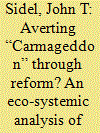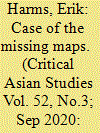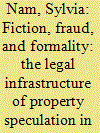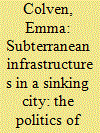|
|
|
Sort Order |
|
|
|
Items / Page
|
|
|
|
|
|
|
| Srl | Item |
| 1 |
ID:
173415


|
|
|
|
|
| Summary/Abstract |
This article provides a holistic analysis of traffic congestion in Metro Manila, treating traffic and transport in the Philippines’ national capital region as an ecosystem which has entrenched itself, endured, and evolved in the face of ongoing demographic, economic, and technological change. The article focuses on the activities and initiatives of a new “species” within Metro Manila’s transport ecosystem – the transport reform advocacy group – to identify and examine both the constituent elements and complex operations of the ecosystem and its capacities for resistance, resilience, and reconstitution in the face of reforms. These reform initiatives include a proposed bus rapid transit (BRT) system, the loosening of number coding restrictions on public utility vehicles, the liberalization of point-to-point (P2P) bus services, the legalization of motorcycle taxis, the Public Utility Vehicle Modernization Program (PUVMP), the establishment of bicycle lanes, and the expansion and improvement of pedestrian walkways to improve micro-mobility in the metropolis. The article concludes with a consideration of the efforts of transport reform advocacy groups to advance these elements of their reform agenda amidst the ongoing global pandemic and the government-imposed quarantine and economic downturn in the Philippines in early-mid 2020.
|
|
|
|
|
|
|
|
|
|
|
|
|
|
|
|
| 2 |
ID:
173413


|
|
|
|
|
| Summary/Abstract |
In May 2018, Ho Chi Minh City officials declared that they had lost the original planning maps to the city’s most important urban development project. The case of the missing maps revealed core tensions about urban planning in the city, galvanized popular resistance to city planning authorities, and prompted a series of investigations into government misdeeds. While it is common to criticize maps as artifacts of state power, this case shows how citizens can reappropriate the meaning of maps and transform them into a form of quasi-legal evidence that demands accountability and responsiveness from state officials in a non-democratic single party state. The transformative entanglement of maps and people, however, works reciprocally – just as social groups can transform the meaning of maps, maps also participate in the transformation of social groups. The concept of “cartographic action” seeks to account for the entangled relationship among maps, political life, and social action.
|
|
|
|
|
|
|
|
|
|
|
|
|
|
|
|
| 3 |
ID:
173414


|
|
|
|
|
| Summary/Abstract |
Through the standardization of property as a commodity, real estate speculation in Phnom Penh has flourished and has included foreigners, for whom Cambodian real estate property is constitutionally off-limits. This essay outlines some features of Cambodian law to highlight the contours of the country’s deep legal pluralism, as well as to describe how law is part of the way property has been remade as a market commodity. “Legal fictions” – technical devices and shell companies – give access to Phnom Penh’s real estate market. The use of legal fictions in Cambodia’s economy is widespread and, crucially, structures property ownership and its distribution. In the process these devices work to veil ownership in plain sight and skew access to property to those who can utilize this effectively.
|
|
|
|
|
|
|
|
|
|
|
|
|
|
|
|
| 4 |
ID:
173416


|
|
|
|
|
| Summary/Abstract |
As part of the national consolidation of Thailand in the early twentieth century, various hinterland populations were actively marginalized and dispossessed. Anthropology and other scholarship normalized this racialized dispossession through notions of highland people’s essential difference from lowland society. Two fantasies in particular cemented notions of highland otherness: ethnographic notions of autonomous and egalitarian ethnic communities, and heterosexual male notions of sexually loose and available non-Thai women. A comparative and regional approach to sexuality and politics suggests a very different reality. Across Southeast Asia, certain customs suggest a shared focus on the benefits of being well attached across differences, for women and for communities. Such customs have been obscured by anthropological and other convictions about culture and ethnicity. This case insists on the importance of customs that have encouraged good attachment and the negotiation of diversity, as common across Southeast Asia and as also shaped by the human bio-cultural evolutionary heritage.
|
|
|
|
|
|
|
|
|
|
|
|
|
|
|
|
| 5 |
ID:
173412


|
|
|
|
|
| Summary/Abstract |
Indonesia’s capital city of Jakarta is one of the world’s fastest sinking cities. Land subsidence, primarily caused by excessive groundwater extraction, damages infrastructure and buildings, and contributes to worsened flood events and tidal inundation. Land subsidence was first identified as an issue in 1989, yet groundwater extraction has only recently been regulated. Meanwhile, city authorities have focused on implementing large-scale infrastructural interventions to reduce the impacts of flooding. This article analyzes why land subsidence remained unaddressed for so long. To do so, it explores the politics of infrastructure in Jakarta through the lens of in/visibility. Scholarship in infrastructure studies has tended to categorize infrastructure as either hyper-visible by design, or invisible until breakdown. This study extends theoretical engagements with infrastructure by examining how visibility, aesthetics, and materiality converge to shape urban and water governance in Jakarta in fundamental ways. Spectacular, visible infrastructures generate public and political attention, while below ground, hidden and invisible infrastructures are overlooked and politically unpopular to address. This “politics of visibility” articulates with a mode of aesthetic governmentality with uneven consequences for Jakarta’s residents.
|
|
|
|
|
|
|
|
|
|
|
|
|
|
|
|
| 6 |
ID:
173417


|
|
|
|
|
| Summary/Abstract |
Visible in the extant and deep depredations that rural India is experiencing are forms of malevolence. As agendas to promote nature conservation and agricultural productivity gain ground, these iconize the tiger and the tube well and mask the extent to which both are sources of counter-conservation and counter-productivity. Generating cruel distortions in the life-worlds of rural, marginalized communities, these iconic interventions trigger a disassembling of customary practices and knowledge, a resignification of symbolic complexes, and adversarial human-nature relations. Even as the tiger and the tube well are promoted by government agencies and agri-businesses, they render already vulnerable citizens, small and marginal cultivators, Adivasis and children, into sacrificial subjects, denying them citizenship rights and the conditions for life. The resulting malevolence threatens the ecological sustainability, economic viability, citizens’ safety, and overall well-being of India’s marginalized majority.
|
|
|
|
|
|
|
|
|
|
|
|
|
|
|
|
| 7 |
ID:
173418


|
|
|
|
|
|
|
|